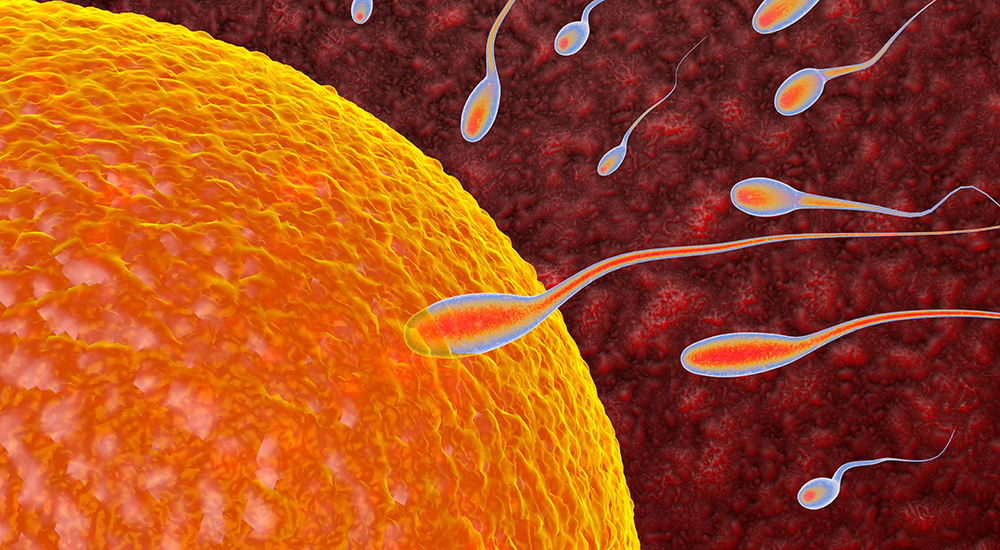
What is being tested?
Oestrogens are a group of hormones primarily responsible for the development of female sex organs and secondary sex characteristics. While oestrogens are the major female sex hormones, small amounts are found in males. In women, follicle-stimulating hormone (FSH; produced by the pituitary gland) stimulates cells (follicles) surrounding the eggs in the ovaries, causing them to produce oestrogen, mainly oestradiol. When the oestrogen levels reach a certain level, the pituitary produces luteinising hormone (LH), which eventually causes the release of the egg, beginning the preparation for fertilisation.
There are three main oestrogen fractions: oestrone (E1), oestradiol (E2) and oestriol (E3). E1 and E2 are the two main oestrogens in non-pregnant females, while E3 is the main pregnancy hormone.
How is it used?
Oestradiol levels are used to evaluate ovarian function and to help diagnose the cause of precocious puberty in girls (very early signs of puberty) and gynaecomastia in men. Its main use has been to help diagnose the reason for amenorrhoea (for example, to determine whether the cause is menopause, pregnancy, or a medical problem). In treatment of sub-fertility, repeated measurements are used to follow follicle development in the ovary in the days prior to ovulation or in-vitro fertilisation. Oestradiol measurement may also be used to monitor menopausal hormone replacement therapy, if given as oestradiol by implant.
Oestriol, along with alpha-fetoprotein (AFP maternal) and human chorionic gonadotropin (hCG), is used to assess the risk of carrying a foetus with certain abnormalities, such as Down syndrome.
Oestrone is rarely measured but may be helpful in the diagnosis of an ovarian tumour, Turner’s syndrome, and hypopituitarism. In males, it may help in the diagnosis of gynaecomastia or in the detection of oestrogen-producing tumours.
When is it requested?
Your doctor may request oestradiol (along with other tests) if you have symptoms such as pelvic heaviness, abnormal vaginal bleeding, abnormal menstrual cycles, or if you are having hot flushes, night sweats, difficulty sleeping or symptoms of the menopause. If you are on hormone replacement therapy, your doctor may use oestradiol levels to monitor your treatment, but only if oestrogen is given in a form that can be measured by the laboratory.
If you are having difficulty conceiving and becoming pregnant your doctor may use oestradiol measurements over the course of your menstrual cycle to monitor follicle development and detect ovulation prior to in vitro fertilisation techniques (timed with a surge in your oestradiol level).
If you are pregnant, unconjugated oestriol may be measured in the 15th to 20th week of gestation as part of the triple screen.
What does the result mean?
Increased or decreased levels of oestrogen are seen in many metabolic conditions. Care must be used in the interpretation of oestrone, oestradiol and oestriol levels because their levels will vary on a day-to-day basis and throughout the menstrual cycle. If your doctor is monitoring your hormone levels, s/he will often be looking at trends in your levels, rising or falling over time, rather than at single values. It must be remembered that a diagnosis cannot be made solely based on one test result.
Is there anything else I should know?
Beyond daily and cycle variations, illnesses such as hypertension (high blood pressure), anaemia, and impaired liver and kidney function can affect oestrogen levels in the body.
Common questions
Yes. Although they are present in amounts far less than in women, they are present and are needed for hormonal balance and the function of other glands.
Oestrogen receptors are proteins located on cells from certain tissues that bind with oestrogen. One risk factor for breast cancer is the presence of excess oestrogen. This excess exposure to oestrogen seems to stimulate cancer cell growth.
Phytoestrogens are oestrogen-like compounds from plant sources. The two main classes are isoflavones, found in soy products, and lignans, found in whole grains and some fruits and vegetables. It has been proposed that these products could be used as an alternative to hormone replacement therapy (HRT). Initial studies have shown the relief of some menopausal symptoms, such as hot flushes, but there is more research yet to be done.
Environmental oestrogens are chemicals, either natural (such as plant sources) or man-made (such as the insecticide DDT), that mimic the effect of oestrogen and may cause disorders such as infertility, overgrowth of the vaginal lining, premature breast development, and feminisation in young males. They tend to stay in the body for long periods of time and are being studied for their long-term effects.
Your doctor may be able to help. Alternatively there is also a great deal of information on the Internet.
Pathology Tests Explained (PTEx) is a not-for profit group managed by a consortium of Australasian medical and scientific organisations.
With up-to-date, evidence-based information about pathology tests it is a leading trusted source for consumers.
Information is prepared and reviewed by practising pathologists and scientists and is entirely free of any commercial influence.